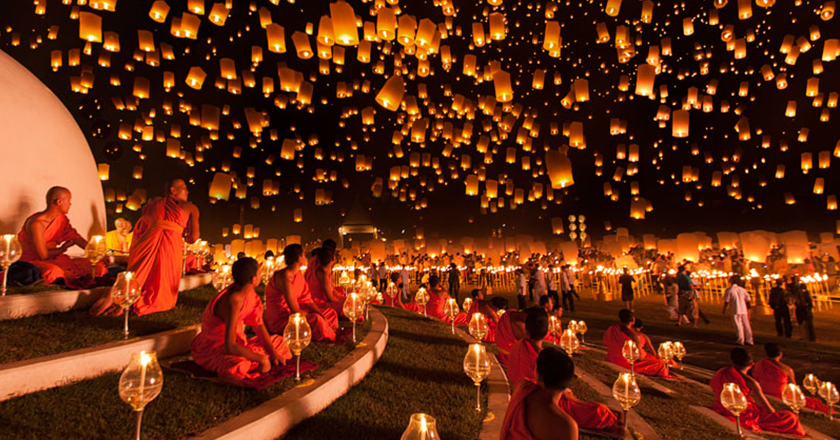Sri Lanka, an island nation with a history spanning over 2,500 years, boasts a rich cultural heritage shaped by a tapestry of influences. From its ancient Buddhist roots to the colonial impact and diverse ethnic composition, Sri Lankan culture is a vibrant blend of traditions, rituals, arts, and festivals. Here, we explore the various facets that make Sri Lanka’s culture unique and fascinating.
Ethnic and Religious Diversity
- Ethnic Groups:
- Sinhalese: The largest ethnic group, the Sinhalese make up about 74% of the population. They primarily speak Sinhala and are predominantly Buddhist.
- Tamils: Tamils constitute around 15% of the population and are divided into Sri Lankan Tamils, mainly in the Northern and Eastern provinces, and Indian Tamils, primarily in the central highlands. Tamil is their primary language, and they predominantly practice Hinduism.
- Moors: Sri Lankan Moors, about 9% of the population, are mostly Muslim and speak Tamil as well as Sinhalese.
- Other Groups: This includes Burghers (of mixed European descent), Malays, and various indigenous groups such as the Veddas.
- Religious Practices:
- Buddhism: The dominant religion, Buddhism, influences many aspects of Sri Lankan culture. The island is dotted with ancient stupas, temples, and monasteries.
- Hinduism: Predominantly practiced by the Tamil community, Hindu temples and festivals add to the cultural richness of the island.
- Islam: The Muslim community celebrates its own festivals and traditions, contributing to the multicultural landscape.
- Christianity: Both Catholic and Protestant Christians, mainly from the Burgher and Sinhalese communities, also have a significant presence, particularly in coastal areas.
Festivals and Celebrations
- Vesak:
- Significance: Celebrated in May, Vesak marks the birth, enlightenment, and death of Buddha. It is one of the most important festivals in Sri Lanka.
- Celebrations: Streets are adorned with lanterns and lights, and temples host various ceremonies and meditations. Dana (almsgiving) and charitable activities are common during this period.
- Sinhala and Tamil New Year:
- Date: Celebrated in mid-April, this festival marks the end of the harvest season.
- Traditions: The New Year is welcomed with traditional games, rituals, and feasting. Homes are cleaned and decorated, and families gather for celebrations that include lighting oil lamps and partaking in customary meals.
- Kandy Esala Perahera:
- Significance: One of the grandest Buddhist festivals, it is held in July or August in Kandy, celebrating the Sacred Tooth Relic of Buddha.
- Procession: The highlight is a spectacular procession featuring beautifully adorned elephants, traditional dancers, drummers, and torchbearers, attracting visitors from around the world.
- Deepavali (Diwali):
- Significance: Known as the Festival of Lights, Deepavali is celebrated by the Hindu community to mark the victory of light over darkness.
- Celebrations: Homes are illuminated with oil lamps, and families gather for prayers, feasts, and fireworks.
- Ramadan and Eid:
- Observance: Muslims observe Ramadan with fasting and prayers, culminating in the celebration of Eid al-Fitr.
- Traditions: Eid is marked by communal prayers, feasting, and giving alms to the poor.
Traditional Arts and Crafts
- Dance and Music:
- Kandyan Dance: Originating from the hill country, this classical dance form is characterized by elaborate costumes, rhythmic drumming, and energetic movements.
- Low Country Dance: Found in the coastal regions, these dances are often performed during rituals and exorcism ceremonies.
- Sabaragamuwa Dance: This form includes both folk and ritualistic dances, reflecting the culture of the Sabaragamuwa Province.
- Craftsmanship:
- Wood Carving: Sri Lankan artisans are renowned for their intricate wood carvings, often depicting religious and cultural motifs. Temples and traditional buildings frequently showcase these exquisite works.
- Lacquerware: Traditional lacquerware involves coating objects with a protective and decorative layer of lacquer, often featuring vibrant colors and patterns.
- Weaving and Textiles: Sri Lanka has a rich tradition of weaving, with handloom textiles being particularly famous. Batik, a fabric dyeing technique, is also widely practiced.
Cuisine: A Fusion of Flavors
- Staple Dishes:
- Rice and Curry: The cornerstone of Sri Lankan cuisine, typically featuring a variety of vegetable, meat, or fish curries, along with accompaniments like sambol (a spicy condiment) and papadum.
- Hoppers (Appa): Bowl-shaped pancakes made from fermented rice flour, often enjoyed with a variety of curries or sambol.
- Kottu Roti: A popular street food, kottu roti is made by stir-frying shredded roti (flatbread) with vegetables, eggs, and meat or seafood.
- Sweet Treats:
- Wattalappam: A rich coconut custard pudding made with jaggery, eggs, and spices.
- Kiri Toffee: A caramel-like confection made from condensed milk and cashews.
- Beverages:
- Tea: Sri Lanka, known as Ceylon during colonial times, is famous for its tea. A visit to the hill country’s tea plantations and factories is a must for tea enthusiasts.
- Toddy and Arrack: Traditional alcoholic beverages made from fermented coconut sap.
Clothing and Fashion
- Traditional Attire:
- Saree: Worn by women, the saree is a long piece of cloth draped elegantly around the body, often paired with a blouse.
- Sarong: A versatile garment worn by both men and women, the sarong is a length of fabric wrapped around the waist.
- Cultural Significance:
- Kandyan Saree: A specific style of draping the saree, traditionally worn by women in the Kandyan region during special occasions and ceremonies.
- Festive Attire: During festivals and weddings, traditional attire often features rich fabrics, vibrant colors, and intricate embroidery.
Modern Influences and Globalization
- Contemporary Arts: Modern Sri Lankan artists, musicians, and writers draw inspiration from both traditional culture and global influences, creating a dynamic and evolving cultural landscape.
- Global Cuisine: While traditional dishes remain popular, Sri Lanka’s culinary scene has embraced global flavors, with restaurants offering a fusion of local and international cuisines.
- Media and Entertainment: The rise of television, cinema, and digital media has led to a blending of traditional storytelling with contemporary forms of entertainment, reflecting the changing tastes and lifestyles of Sri Lankans.
Sri Lanka’s culture is a rich tapestry woven from its diverse ethnic groups, religious traditions, and historical influences. Whether through its vibrant festivals, exquisite arts and crafts, flavorful cuisine, or traditional attire, Sri Lanka offers a deep and enriching cultural experience that captivates and inspires visitors and locals alike.


